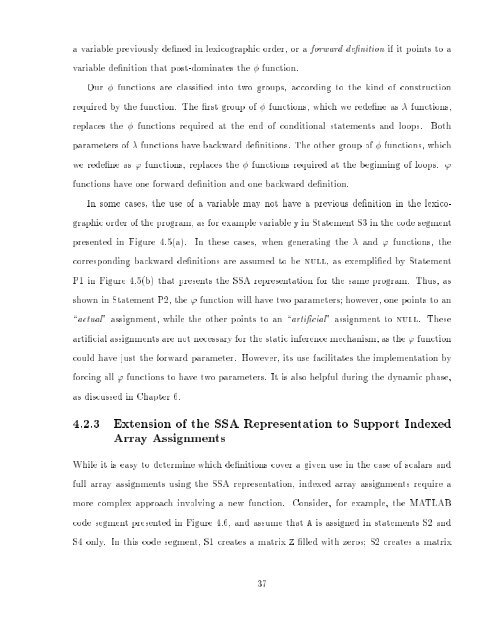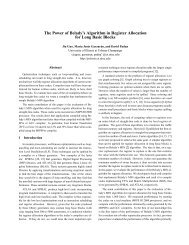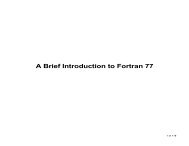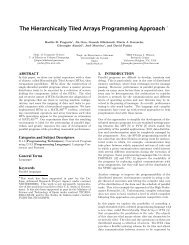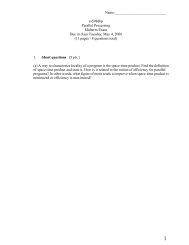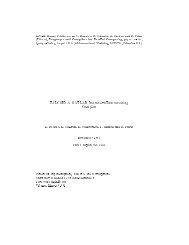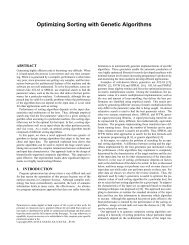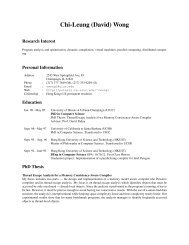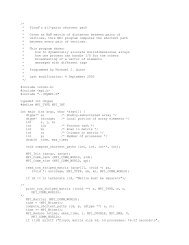COMPILER TECHNIQUES FOR MATLAB PROGRAMS ... - CiteSeerX
COMPILER TECHNIQUES FOR MATLAB PROGRAMS ... - CiteSeerX
COMPILER TECHNIQUES FOR MATLAB PROGRAMS ... - CiteSeerX
Create successful ePaper yourself
Turn your PDF publications into a flip-book with our unique Google optimized e-Paper software.
avariable previously dened in lexicographic order, or a forward denition if it points to a<br />
variable denition that post-dominates the function.<br />
Our functions are classied into two groups, according to the kind of construction<br />
required by the function. The rst group of functions, which we redene as functions,<br />
replaces the functions required at the end of conditional statements and loops.<br />
Both<br />
parameters of functions have backward denitions. The other group of functions, which<br />
we redene as ' functions, replaces the functions required at the beginning of loops. '<br />
functions have one forward denition and one backward denition.<br />
In some cases, the use of a variable may nothave a previous denition in the lexicographic<br />
order of the program, as for example variable y in Statement S3 in the code segment<br />
presented in Figure 4.5(a).<br />
In these cases, when generating the and ' functions, the<br />
corresponding backward denitions are assumed to be null, as exemplied by Statement<br />
P1 in Figure 4.5(b) that presents the SSA representation for the same program. Thus, as<br />
shown in Statement P2, the ' function will have two parameters however, one points to an<br />
\actual" assignment, while the other points to an \articial" assignment tonull. These<br />
articial assignments are not necessary for the static inference mechanism, as the ' function<br />
could have just the forward parameter. However, its use facilitates the implementation by<br />
forcing all ' functions to have two parameters. It is also helpful during the dynamic phase,<br />
as discussed in Chapter 6.<br />
4.2.3 Extension of the SSA Representation to Support Indexed<br />
Array Assignments<br />
While it is easy to determine which denitions cover a given use in the case of scalars and<br />
full array assignments using the SSA representation, indexed array assignments require a<br />
more complex approach involving a new function. Consider, for example, the <strong>MATLAB</strong><br />
code segment presented in Figure 4.6, and assume that A is assigned in statements S2 and<br />
S4 only. In this code segment, S1 creates a matrix Z lled with zeros S2 creates a matrix<br />
37


